Guerrilla Composting: How to Recycle Food Waste without a Compost Bin
The smashed remains of a nectarine, spent coffee grounds, a handful of egg shells, three banana peels…I can’t bring myself to throw this stuff in the trash. Is that weird? I mean, these are raw materials. Worm food. Fuel for the soil. Future plant nutrients. When we’re away from home, we’ve started recycling food waste—without a compost bin—by guerrilla composting.
You can also call this pit or trench composting. It’s super easy and free, if you can find a shovel. In the post below, I’ll show you how.
Tutorial
(In the tutorial below, I’ve used photos from trench composting last Thanksgiving. See if you can spot the leftover dressing!)
What You’ll Need:
- Food and other organic waste – You can compost pretty much anything with this method. If your hosts are skeptical, you might want to stick with fruit/veggie waste, coffee grounds, paper waste, and egg shells. Otherwise, you can also toss in meat, dairy, fats, cooked foods, and anything else that was once living. It will all decompose. (Still not sure? Here’s a post about Composting Maybes that might be useful.)
- Collection container – No need for an official compost container. You can use anything big enough to hold a day or two of potentially leaky food scraps, for example, a large bowl with a lid, a plastic bag, and a re-purposed clam shell container from greens. Since we’ve got family members with sensitive noses, we kept our bowl in the fridge to avoid any off smells from early decomposition.
- Shovel – If you need to purchase one, a camping shovel would be a great investment that can go with you on future trips.
1. Choose a place to dig.
If possible, dig your hole in a future planting area. Then, you’ll be building fertility right where you or your hosts will want it. We’re using a planter in a side yard that isn’t being used right now.
If you’re unfamiliar with the area, find out where underground lines and utilities run. (Call 811 if you need help with this. Within a few days, the local utility companies will come mark the lines for free.)
Keep the hole at least 100 feet from bodies of water to avoid any potential run-off/contamination, especially if you’re burying meat or manure.
If the soil is really hard, try watering it the day before so it will be easier to dig.
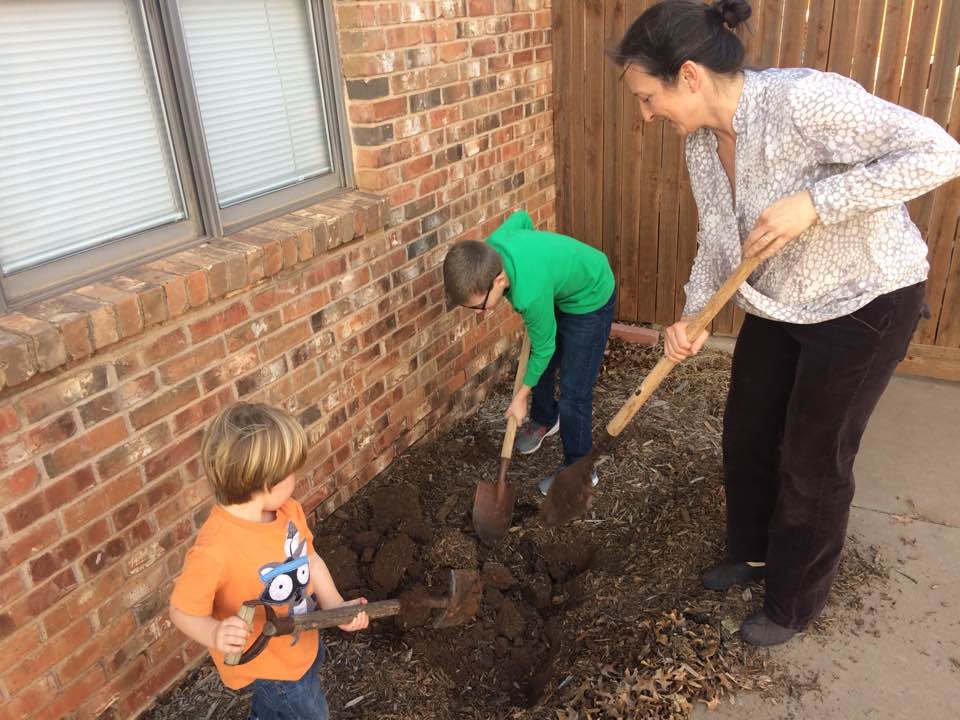
2. Dig a hole 8-12″ deep.
It should be big enough that your food waste can fit and at least 6″ of space to fill in with soil. You can eyeball it, or lower your bowl/bag into the hole to check.
If you’re going to add meat/dairy and/or have lots of wildlife around or curious neighborhood dogs, dig down the full 12″ so you have room on top for a generous layer of soil. The soil will act as a filter for any smells that come from the decomposing waste.
If you’ll be guerrilla composting for an extended period of time, you can dig a trench instead of a hole and fill it in a bit at a time.
Optional: If you’re digging in a lawn, cut out squares of sod to remove as a layer that you can place back on top after you finish.
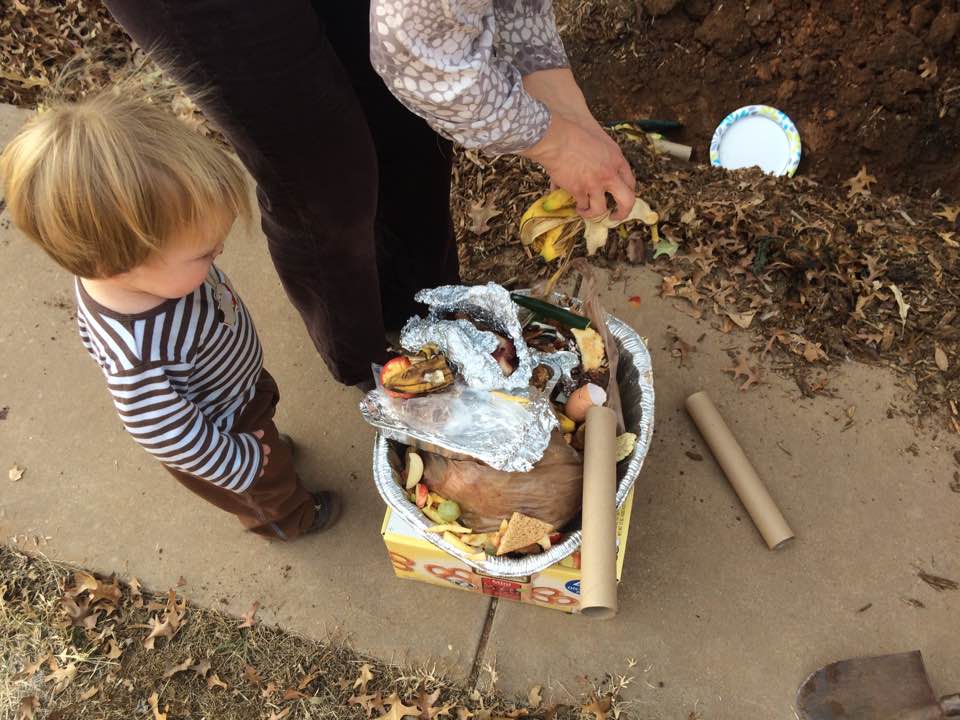
3. Dump in your food waste!
You can rinse your collection container and dump the water into the hole, too. If you’re in a dry climate or drought, you may want to add some extra water.
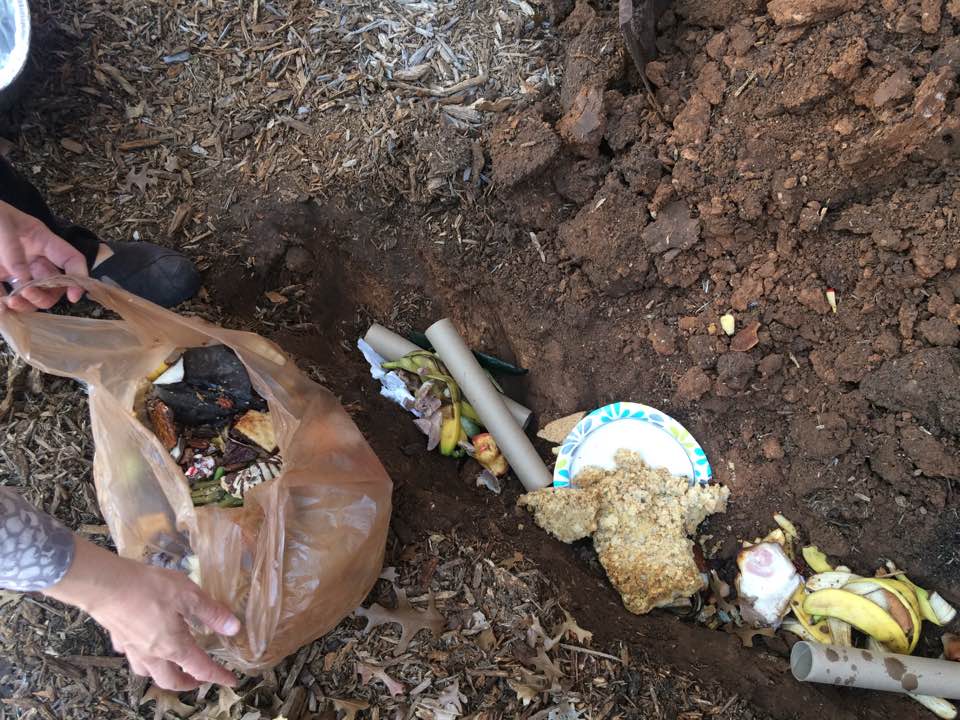
4. Cover with at least 6″ of soil.
Mound up the soil and press it down gently, but don’t compact it. While this isn’t “hot” composting, the soil micro-organisms still need oxygen to live and reproduce. The soil will settle a bit as the material decomposes.
If you’re worried about digging animals, you can place a few rocks or a board on top.
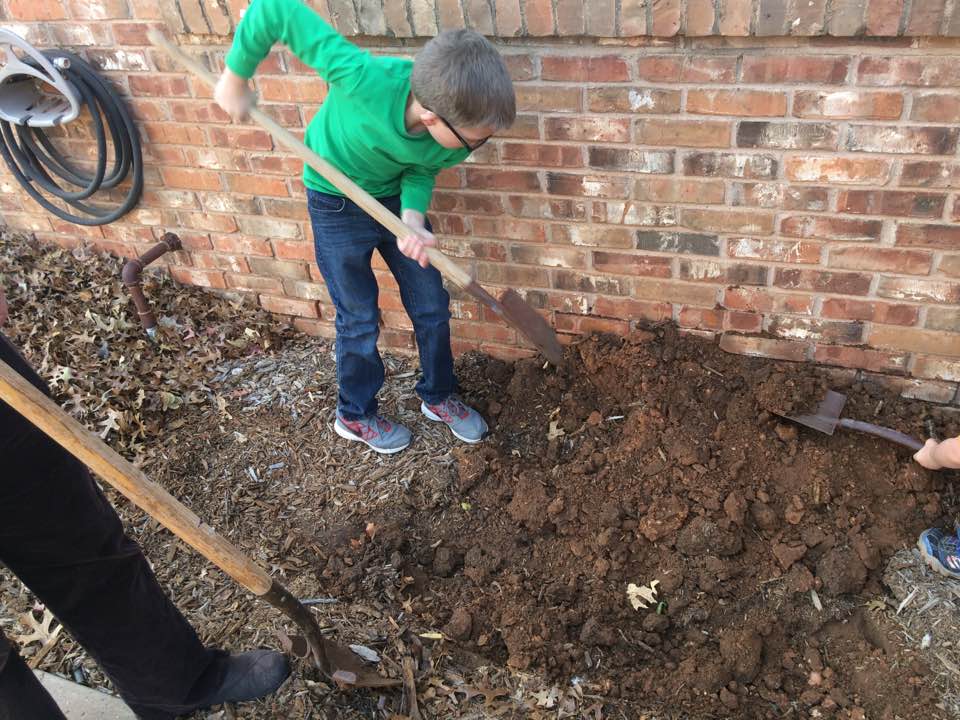
5. Optional: Plant a few seeds or a seedling on top.
Turn your guerrilla composting into guerrilla gardening by planting above the composting waste.
6. Repeat with the next batch of food waste. 🙂
Depending on the materials you compost and the weather, the waste will decompose in 3-6 months.
Now, I’d love to hear from you in the comments below.
Have you ever tried guerrilla composting? Do you have other ways you keep up sustainable habits when you’re away from home?
Want to learn even more about composting?
We have classes and a community that can help. Get started with The Happy Garden Guide to Composting.

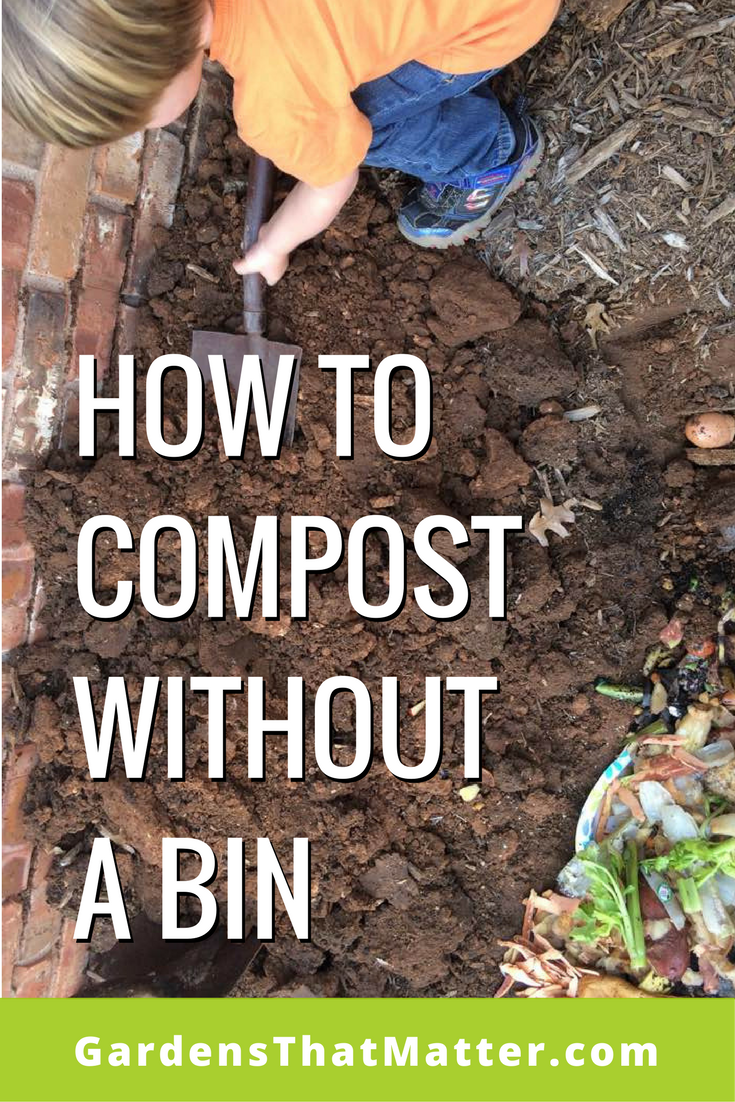
No, I haven’t used this method yet, but will be from now on. I have a large section by the side of my house that needs fertile soil. My bin worms have plenty to eat. Will this help bring earthworms to the suface. Our entire property seems devoid of earthworms.
In my experience, when I add organic matter, whether it’s mulch, compost, or food waste, I’ll find more worms in that area later. Do you know if you have earthworms in your region, Annie? (For example, do your neighbors find worms?) If worms are around, I do think this method of composting will attract them. The food waste will provide food for the microorganisms that earthworms eat, so you will likely see a boost in their population!
awesome post! thanks!
You’re welcome! Thanks for reading. 🙂
Wonderful idea thanks!
My family and I just returned from traveling for over two weeks in California. We could’ve used this idea during the trip. Next time I’ll make sure to pack a garden trowel!
I like the idea of including a garden trowel or camping shovel on the packing list for future trips, Chad! 🙂